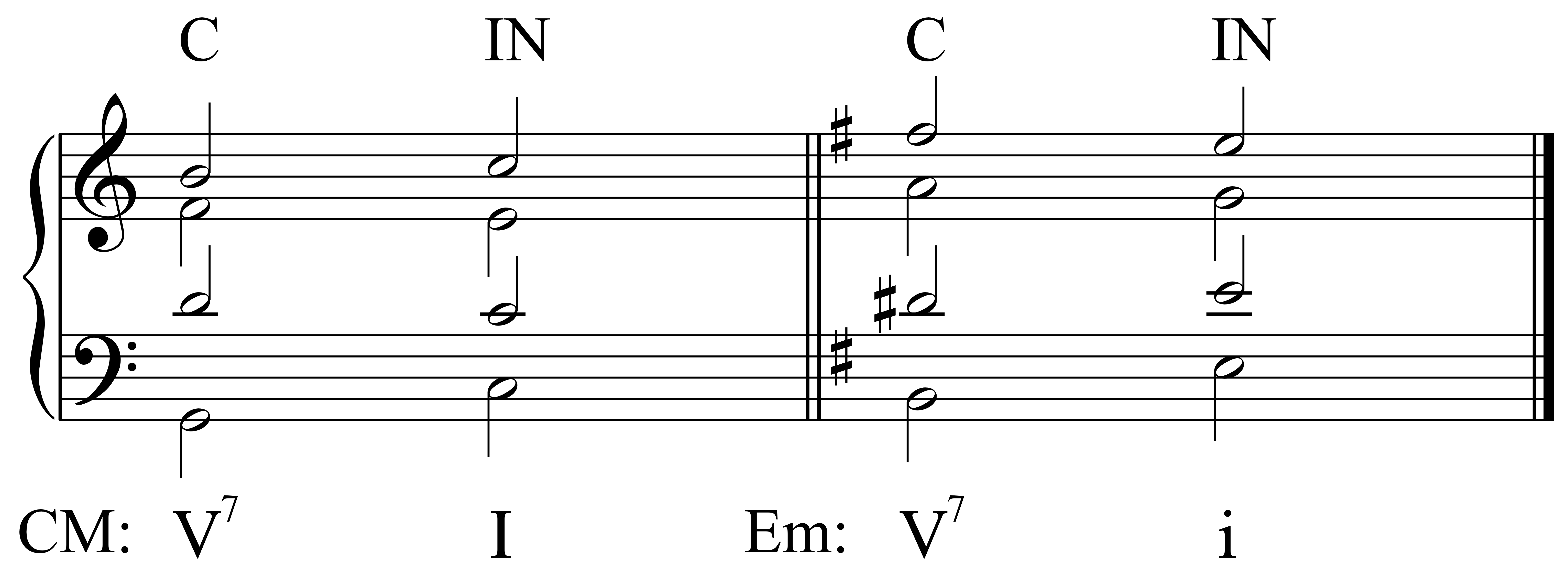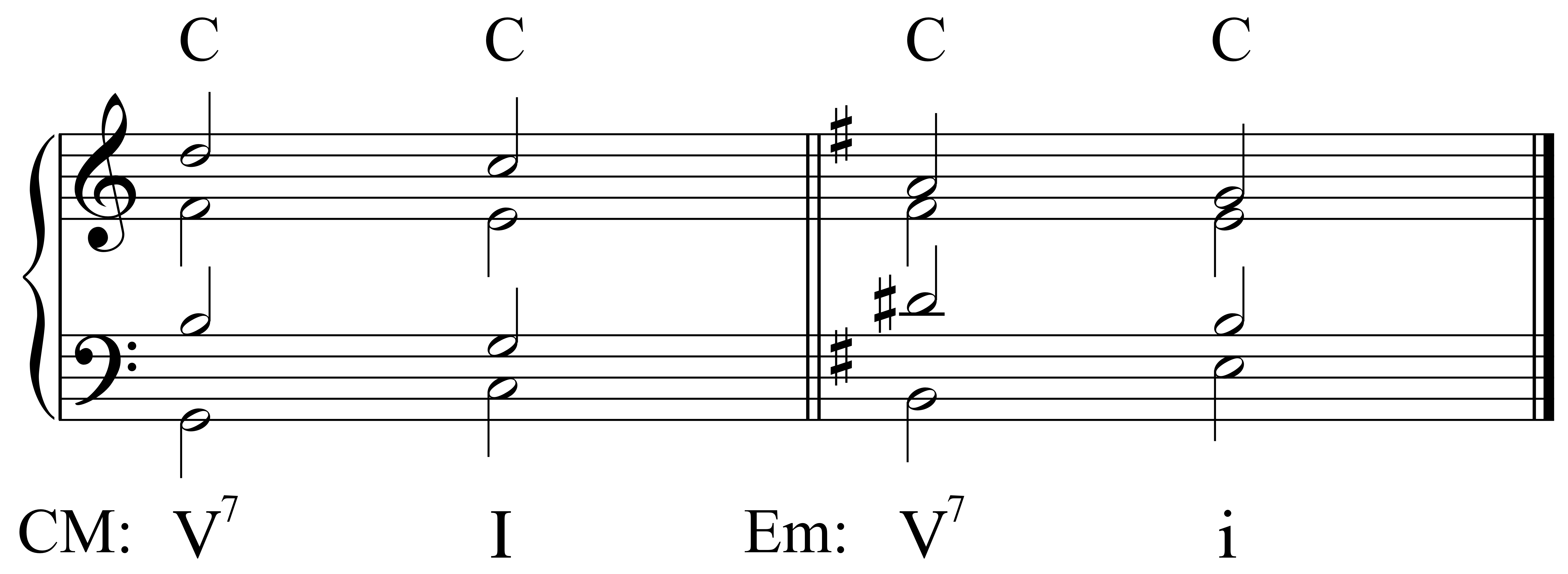Our book spends multiple chapters on seventh chords, but it really boils down to these few things.
- Seventh Chords share the same function as the triads on the same roots. The only distinction is that in pre-20th century tonal styles (the ones we are studying), I7 (i7) is not stable enough to end on.
- Part writing seventh chords with descending 5th root movement (ascending 4th) requires one of the seventh chords (or the triad following a seventh chord) to be incomplete. We leave out the fifth and double (or triple) the root in these instances. Seventh chords in inversions are always complete.
- Most importantly, the seventh of the chord resolves down by step as soon as possible. (In certain circumstances, you may have to wait a chord, but it usually is directly to the next chord.) This is tonal tension and release at one of its most basic levels, and is amazingly effective when followed. If you remember one thing from your time in Theory II, make it this paragraph on this page.
V7-I in Root Position: Three Ways
When part writing V7–I (V7–i), we have three options. 1) Complete to Incomplete (C-IN), 2) Incomplete to Complete (IN-C), and 3) Complete to Complete (C-C). Whenever you part write this progression, know which one you are using. I will ask you on homework, the quiz, and on tests to part writing specific versions.
Complete to Incomplete (C-IN)
- Bass: Sol-Do
- Upper voices, each a possible melody in the S.
- Ti-Do
- Re-Do
- Fa-Mi (Me)
- Incomplete I (i) omits the fifth and triples the root.

Incomplete to Complete (IN-C)
- Bass: Sol-Do
- Upper voices, each a possible melody in the S.
- Ti-Do
- Fa-Mi (Me)
- Sol-Sol
- Incomplete V7 omits the fifth and doubles the root.

Complete to Complete (C-C)
- Bass: Sol-Do
- Upper voices that can be melody in the S.
- Fa-Mi (Me)
- Re-Do
- Other voice MUST be in the A or T (not in the S!).
- Ti-Sol
- Avoids incomplete by frustrating the leading-tone down a third.

Dominant Seventh Chord Inversions
Exploring the correct voice leading of inversions of V7–I, we can notice patterns.

Notice that all three examples contain the following voices:
- Sol-Sol
- Ti-Do
- Re-Do
- Fa-Mi (Me)
Some things to take away:
- Both chords are complete.
- They all use the exact same voice leading. The only difference is which voice is in the Bass.
It is also possible for V43 to resolve to I6, changing the Bass to Re-Mi (Me).